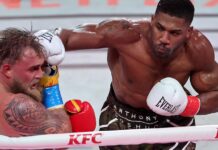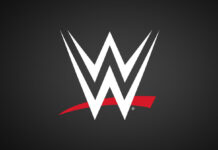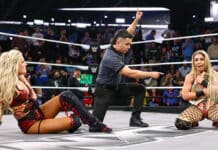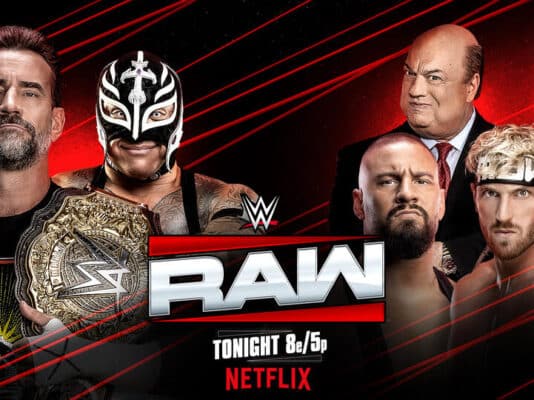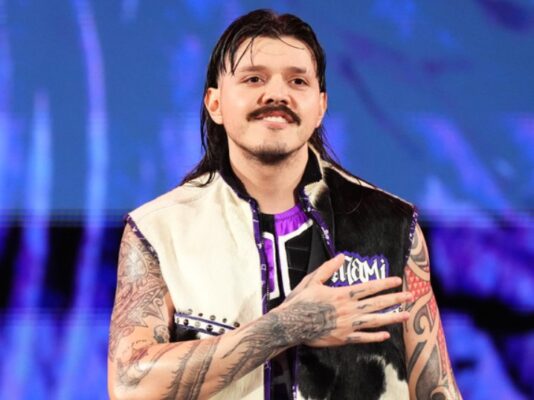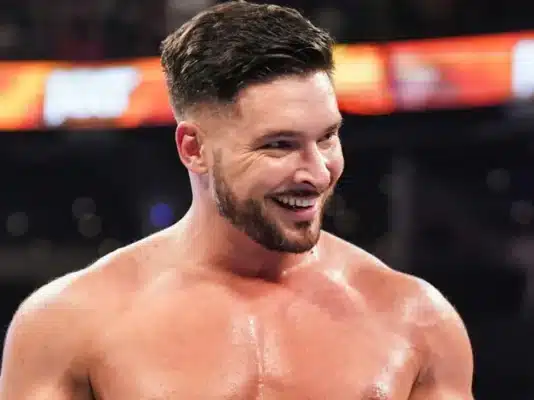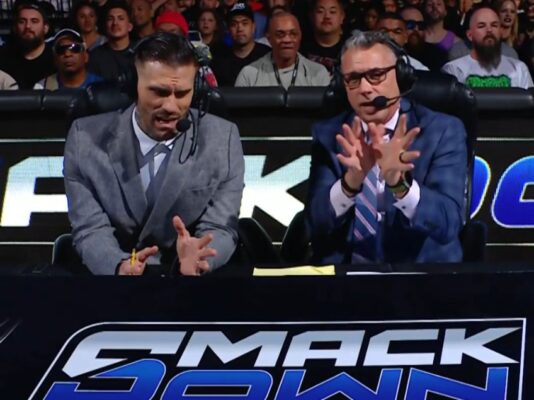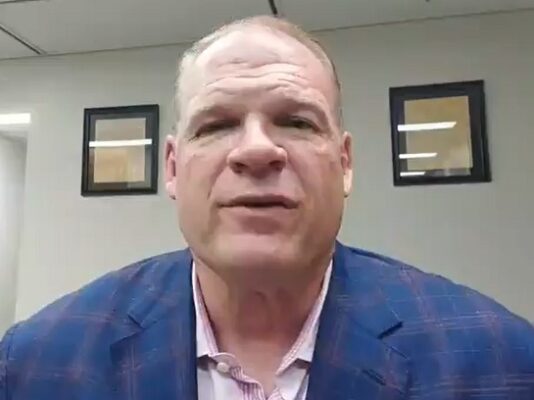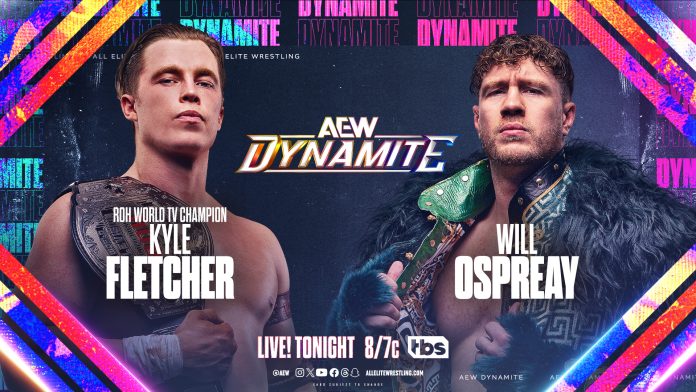
The numbers don’t lie. Unless you’re doing a politician’s taxes, but that’s another story for another time.
This past Wednesday on Dynamite, the promotion’s newest signee, Will Ospreay, formerly of New Japan Pro Wrestling fame, worked the main event segment in a match against longtime friend, Kyle Fletcher, one half of Aussie Open. After a few months of rumors and speculation about where he would show up next, another former New Japan talent, Kazuchika Okada officially arrived as a full-time talent for All Elite Wrestling, aligning himself with The Elite after he turned heel on Eddie Kingston during a promo segment.
So, one of the most spectacular wrestlers in the business today, and a performer that could already be regarded as one of the greatest of all time appeared on television for this episode of Dynamite. The ratings for the show actually declined, garnering 779,000 viewers, a slight dip from the previous week.
That’s less of a strike against the talent, and more of an overwhelming statement about how the talent is presented, which lends to the lack of structure within the organization to maximize its assets on the roster. It might sound like a broken record at this point, but it must be the common disclaimer when discussing this aspect of the product. There’s a difference between a booker and a matchmaker. Tony is a great matchmaker because he can put two names on paper, and given the amount of cash at his disposal from his billionaire family, he can offer enough money to sign very talented wrestlers for his pro wrestling project. It’s not exactly ground-breaking for someone to realize that Konosuke Takeshita and Ospreay are really great in-ring performers so it’s not earth-shattering that they had a great match on pay-per-view. It’s right from Tony’s E-fed playbook when he formatted shows for 53 people on a message board in 2002. However, a booker knows when, where, and how to present the talent available to draw the biggest money and numbers possible within a specific scenario. The circumstances of the talent presented are just as important, and sometimes more important than the talent themselves. A lot of money has been drawn over the years for one-off or limited spots if the right amount of smoke and mirrors are used correctly. Mr. T wasn’t exactly Lou Thez, but he was a key part of the success of Wrestlemania, a show that ultimately determined the future of the WWE, a corporation worth billions of dollars today.
By all accounts, Tony Khan is a great guy, but that doesn’t automatically mean that he should be the booker for the second-largest pro wrestling company in the United States. Furthermore, outside of getting the money from his wealthy family to launch a pro wrestling venture, what exactly qualifies him to run a national organization? As I’ve said before, it would’ve been a lot cheaper for Tony to start an independent promotion to play Vince McMahon than the staggering amount of cash that was used to launch AEW. Keep in mind, according to Wrestlenomics, AEW lost $34 million last year, but money is no object to Tony and thus profit doesn’t matter so the economics of the organization are moot, which is why it’s ultimately a vanity project.
It’s a combination of comical and astounding that with the sheer amount of talent that Tony has under contract that he can’t seem to piece together a coherent or cohesive television program. When you look at the line-up of this week’s Dynamite, it’s rather easy to see why less viewers watched than last week, and with the number under the usual 800,000 benchmark, the argument could be made that the slapstick approach has even eroded some of the core audience.
The show opened with a rather erratic pace as Samoa Joe and Swerve Strickland did a promo before they had a brief tag match against The Undisputed Kingdom. Just when it looked like the stable was getting some importance based on the pay-per-view results, Matt Taven and Mike Bennett were basically used as an enhancement tag team. Swerve, the emerging baby face despite the fact that his actions in recent months would suggest the opposite, was made to look foolish because he agreed to team with Samoa Joe, who he just wrestled for the title days earlier so it wasn’t a surprise when Joe choked him out to conclude the segment. Why were these two partners for a five-minute tag match? Why were members of The Undisputed Kingdom made to look so useless when the faction is supposed to be a part of a key storyline? It also reinforces the notion that Taven and Bennett are cannon fodder, which hinders any importance for the faction.
Hook and Brian Cage working a random hardcore match just days after Darby took a ridiculous plunge through glass was completely ineffective. Besides the fact that there was a gimmick match without an angle to justify it, the AEW viewing audience saw a car crash just a few days ago with the main event of Revolution, how impressive is the fender bender of Hook/Cage by comparison? Furthermore, Cage and his stablemates that got involved are completely secondary among the AEW landscape. Toa Liona and Kaun are usually in the Ring Of Honor witness protection program so does it make a difference if they show up on Dynamite if the vast majority of the audience isn’t familiar with them? Hook has a level of popularity, but how much progress has he truly made in his AEW stint?
As entertaining as Matt Menard is, he worked two matches on Rampage this year before his match against Killswitch on Dynamite so this was more or less a squash match. Similar to Cage, Menard isn’t used in any role of importance on the shows so it’s not as though his matches are must-see for viewers. That’s not to say that Menard doesn’t have the talent to be more than that, because it seemed like he does, but rather to point out that based on his presentation, he’s not a guy that the fans have to consider a key performer for the organization.
Riho vs. Kris Statlander…enough said.
As far as in-ring action, similar to how the Hook/Cage bout was a scaled down version of hardcore wrestling compared to the Revolution tag match, Ospreay/Fletcher was a lesser version of the British grappler’s match with Takeshita at the pay-per-view. If this match was booked for a few weeks later, it could’ve stood out as a dazzling, albeit repetitive spot fest instead of being rather tame compared to a similar bout from just a few days earlier.
However, the biggest reason that this main event didn’t draw or maintain the usual Dynamite viewership is rather simple, the audience doesn’t really know who Klye Feltcher is and he hasn’t been on television enough for the them to be familiar with him. This might’ve been a contest that both wrestlers wanted to have or a match that Tony Khan wanted to see, but the bottom line is, Feltcher hasn’t been on television for roughly six weeks, how was this supposed to be perceived as a major match? Sure, there’s the background of their friendship, but how many fans know that? Furthermore, instead of Feltcher going from a six-week absence from TV to the main event segment, why not build up the bout for a few weeks with promos and video packages to give it a level of importance and some context for the viewers? Don’t get me wrong, both athletes are very talented, but the reason that this didn’t draw ratings is because it was thrown onto the show without the proper approach or promotional push to make the most of it.
Unfortunately, that’s a criticism that could be applied to most of the AEW product.
Okada’s arrival was interesting, as they took a road that will require more booking technique, but could have a bigger payoff in the end. Granted, nothing that we’ve discussed or seen from Tony’s booking philosophy would suggest that he could accomplish that, but the point being, Okada as a baby face for his debut as a full-time AEW wrestler would’ve been very easy. The Japanese superstar as a heel gives his character more options and opens the door for a bigger run as a baby face as his persona progresses within the organization.
According to Tokyo Sports, Okada signed a three-year deal worth nearly $14 million to work for AEW. That would put him in the range of what main event talent in WWE get paid, but it’s important to remember that All Elite isn’t near that level. Don’t get me wrong, if Okada can get that type of cash then good for him, but you have to wonder if the company could realistically generate that level of money promoting Okada? Remember, he’s still relatively unknown to American fans, and All Elite has a limited market share so is it possible that Okada will have the opportunity to generate almost $4.5 million a year for AEW?
Again, it’s great for Okada that he could land that type of deal, especially after reports from The Wrestling Observer described his New Japan pay as “shockingly low,” but if AEW can’t generate enough revenue to get a return on the investment then it might’ve been a foolish offer for Tony Khan to make to the Japanese star. Clearly, he offered more than the WWE to get Okada to ink a contract, but this might’ve been a case where Khan offered an unrealistic amount of money just to be able to say that he signed Okada after the success of Cody Rhodes, CM Punk, and Jade Cargill in WWE.
Considering that Okada will make $4.5 million a year, Tony Khan should have some major plans for him and a long-term spot in the main event. I wouldn’t be surprised if that wasn’t the case, given Tony’s track record, but if the company intends to have any chance of getting a return on the investment of the contract then Okada will have to be featured in a high profile spot to hopefully boost recent sluggish ticket sales and TV ratings.
Obviously, Okada’s debut was unannounced so the decline in ratings can’t be blamed on that, and next week will be the highly-anticipated debut of Mercedes Mone so that should increase the numbers, but this isn’t about the artificial increase when Tony spent big money to land a free agent, we’ve seen that before. The question is, how does this impact the company on a long-term basis? Will Okada and Mone be put in a position to maximize the money that they can draw for the company?
The argument could be made that Tony Khan didn’t book a scenario that could maximize Will Ospreay’s main event match since it drew the lowest rating for the company in the past six months.
The numbers don’t lie.
What do you think? Share your thoughts, opinions, feedback, and anything else that was raised on Twitter @PWMania and Facebook.com/PWMania.
Until next week
-Jim LaMotta
E mail [email protected] | You can follow me on Instagram, Facebook, & Threads @jimlamotta89


